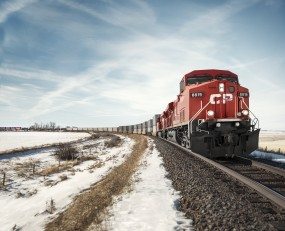
What is going on in the US rail sector? The recent figures out of a string of US and Canadian rail freight have shown a market facing sharp contraction with Union Pacific seeing a 14% decline year-on-year in operational revenue for the first quarter of the year on an 8% fall in volumes, whilst BNSF saw a 25% drop in profits and volumes fell by 5.5%. Canadian National saw similar falls volumes and a 4.3% drop in revenue over the same period.
The easy part to understand is the role that changes in the North American energy market have had on the railway.
For more than a decade the growth in coal production helped drive demand for rail freight. The Powder River Basin coal fields in Wyoming grew through the 1990’s and 2000’s creating huge demand for services moving East and West. However, the shift to shale gas for generating electricity has savaged demand for coal, as has pressure to reduce CO2 emissions. Now the prospects for this sector look grim, with a string of coal miners going out of business and the demand for coal trains falling.
The Shale gas and oil business itself is a significant market for rail freight and one which drove a mini-boom in rail just a couple of years ago. But now that too is experiencing falling demand, with both lower oil output and less demand for fracking sand. Even agriculture is no longer as buoyant, with global food prices softer as emerging markets growth slows.
Yet there ought to be bright prospects in other sectors of the market. Automotive customers are a major segment and demand here is strong. Not only are car sales healthy in the US but production in Mexico, which demands a disproportionate level of rail freight from within the US, also continues to expand. Yet companies such as Union Pacific saw a slight fall in volumes of both finished cars and components over the past quarter as compared to a strong single digit growth in the previous quarter.
Even The Intermodal market has also disappointed with BNSF and Union Pacific seeing double digit percentage declines in demand.
This has led to extensive reductions in capacity at the major rail companies, with the hundreds of trains being parked on sidings.
It appears that the US economy has slowed over the short-term, both in terms of consumer demand and industrial activity. However, the longer-term challenge for the North American rail freight sector is to deal with a restructuring caused by lower commodity traffic, including coal but also oil, fracking sand and possibly agricultural products.
Source: Transport Intelligence, 11th May 2016
Author: Thomas Cullen